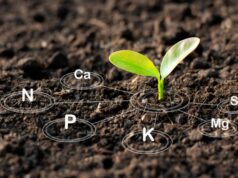Soil serves as a reservoir of nutrients and water for the crops it supports. Long term application of sewage and sludge might convert the once fertile environmentally safe lands into the contaminated with toxic heavy metals since sewage sludge are potential source of essential plant nutrients as well as organics and heavy metal pollutions.
It necessitates decontamination of the soils from toxic heavy metals, to check any further decline in soil quality and to prevent the heavy metals from entering the food chain.
There are many chemical approaches for the decontamination of such soils, which offer ways to render the contaminations immobile. But it will not facilitate the physical removal of the contaminants from the soils system.
The green cure technology of phytoremediation offers an economically viable, socially acceptable and environmentally sound solution. Certain plants have evolved the capacity to take up and accumulate selected metals in their shoots at levels that are toxic to ordinary plants.
Therefore, these plants may be used to remove metal contaminants from a matrix, then the metals can be recovered by extraction procedures. Phytoremediation can be used on sites that are polluted with heavy metals as well as organic chemicals.
Phytoremediation can be defined as “use of green plants and their associated microbiota, soil amendments and agronomic techniques to remove, or render harmless environmental contaminants”.
Some of the plants can accumulate 1000 times more heavy metals than the soil in which they grow. These plants are termed as hyper accumulators metal hyper accumulators can be defined as plants that contain more than 10000 mg kg-1(1%) of that heavy metal in dry matter.
Thlaspi caerulescens and Brassica juncea have been widely cited to be hyper accumulators for several heavy metals (Zn, Pb, Cd, Se, Ni, Cu etc.).
[indeed-social-locker sm_list=’fb,tw,go1′ sm_template=’ism_template_1′ sm_list_align=’horizontal’ sm_display_counts=’false’ sm_display_full_name=’true’ locker_template=2 sm_d_text='<h2>This premium content is locked</h2><p>Share This Page To Unlock The Content!</p>’ ism_overlock=’default’ ]
Retention and accumulation of heavy metals in soil
The main sources of metals contamination in soils are industrial emissions, contaminated dusts brought down by rain fall, dumped waste materials, sewage sludges composted town wastes, fertilizer and pesticides. The industries generate enormous quantities of wastes containing heavy metals, pesticides and other toxic chemicals.
The indiscriminate disposal of these wastes into land presents a potential threat to ecosystem. Heavy metals can accumulate in soil and water to reach toxic concentration in the environment. Heavy metals are considered very
important and received considerable attention because of their inherent toxicity to plants, animals and humans. A list of industries/chemical operations releasing some of the toxic elements are given below:
Cd – Electroplating industry; Cr – Leather industry and carborandum industry; Ni – Plating industry and catalysis; Pb – Batteries and paint industry; Hg – Chloralkal plants and electrolysis for production of Na metal; Zn – Viscose Rayon Industry and pesticides.
Serpentine soils contain upto several thousand ppm of Ni. The content of lead in soils commonly increases with proximity to major pathways.
Phytoremediation
The use of specially selected and engineered metal accumulating plants for environmental clean up is an emerging technology called phytoremediation. It is a process in which plant exclude the metals, extract and store them in their body or convert them into volatile form that can be released into air.
The primary objective of phytoremediation is to maximize the transfer of contaminants to the plant shoots so that the greater amount of these are removed by each cropping.
Phytoremediation is defined as the use of green plants to remove pollutants from the environment or to render them harmless.
Phytoremediation can be practiced to both organic and inorganic pollutants, present in solid substrates (soil), liquid substrate (water) and the air. Phytoremediation is divided into the following areas:
- Phytoextraction: Absorption of the contaminants into the plant tissue and subsequent harvesting for destruction.
- Phytovolatilization: Plants or their associated microbial activity help to increase the rate of volatilization of a contaminant from the contaminated soil.
- Phytodegradation: Plants take up the contaminants and metabolize it to an environmentally benign material.
- Rhizodegradation: Plant roots, their associated micro flora and/or excreted products destroy the contaminant in the root zone.
- Phytostabilization: The use of plants to reduce the bioavailability of pollutants in environment.
Hyper-accumulation
Hyper-accumulation species are defined as those whose leaves contain > 100 mg Cd kg-1, 1000 mg Ni and Cu kg-1 or > 1000 mg Zn or Mn kg-1 (dry weight) when grown in metal rich soils. Hyper accumulator species also accumulate metals when grown in conventional potting media.
Some ecotypes of Thlaspi caerulescens can tolerate as much as 40,000 ppm Zn per dry weight in the shoots. Brassica juncea was reported to be a super hyper accumulator to Thlaspi caerulescens as it produces at least 10 times more biomass than T. caerulescens.
Heavy metal Hyper accumulating plant Maximum metal concentration in leaves (mg kg-1)
Zn Thaspi calaminare 39600
Cu Aeolanthus bioformifollus 13700
Ni Phyllanthus serpentines 38100
Co Haumaniastrum robertil 10200
Se Astragalus sp. >10000
Mn Alyxia rubricaulis 11500
Cd Cardaminopsis halleri 60000
Cr Lemna minor 2870
Hg Lemna minor 25800
Initial phytoremediation research suggested that this could be achieved with hyper accumulator plant species such as Thalspi caerulescens having higher accumulation of Zn and Cd. Recent evidence suggests that moderate accumulating high biomass species such as Indian mustard (Brassica juncea) may accumulate four times more Zn than T. caerulescens due to the fact that B. juncea produced 10 times more biomass than T. caerulescens. Indian mustard can grow normally in soil contained with 250 mg Cu kg-1, 500 mg Pb kg-1 or 500 mg Zn kg-1 soil.
Indian mustard (B. juncea) also reduce soil Se concentration to non-toxic levels. B. napus and B. rapa also show a similar tendency to accumulate moderate levels of heavy metals. It was also reported that Indian mustard (B. juncea cv. 426308) and sunflower accumulated more Cr than other plant species. Indian mustard had a greater capacity for uptake of Pb, Zn and Cd than B. carinata.
Therefore, hyper accumulator species have a capacity to take up heavy metals in excess. Thus, reducing the heavy metal concentration in soil Hyper accumulation is an ecophysiological adaptation to metalliferous soils.
The mechanisms of metal accumulation, which involve extra cellular and intracellular metal chelation, precipitation, compartmentalization and translocation in vascular system. The roots of Eucalyptus tereticorins, Ailanthus excelsa, Bombax ceiba and Azadirachta indica accumulated significantly more Zn, Cu, Ni and Pb than the shoot portions due to the restricted mobility of these metals with in the plants.
Bamboo with its fibrous root system proved to be the best bioscavenger of all the above heavy metals listed. Hence, for phytoremediation of heavy metals polluted soils, Bamboo spp. could be grown effectively.
Advantages of phytoremediation
Phytoremediation is cost effective and can remediate a site without disturbing the landscape. It can fulfill the need of physical removal of heavy metals from the contaminated sites, which is impossible through other alternatives.
The advantages of this technology over other approaches of decontamination are:
- It is a particularly appealing technology because, it employs a more familiar system, plants rather than invisible microbes for waste clean up.
- Cheapest, environmentally friendly method and best suited for low and medium contaminated soil.
- Less disruptive of the remediation site.
- It improves soil physio-chemical properties and biological activities and create a beneficial habitat for wild life.
- It can be used as a mineral source.
- It can be easily monitored.
- No accumulation in the edible parts of hyper accumulation thus making the position of consumer safe.
- In the long run it is the best method available to reduce heavy metal toxicity.
Disadvantages
- It needs long time period to decrease the metal level in the soil.
- It does not remove all quantities of contaminants.
- Through this technique metals cannot drawn beyond the root zone i.e. 1-2 meter.
Thus, it is concluded that utilization of the remarkable potential of green plants to accumulate elements and compounds from the environment is going to serve as the green cure technology for the agro-ecosystem. The ability to use natural ecosystems to remediate the environmental damage done by industrial and urban activities has generated excitement among technologies, owners of contaminated sites, regulators and the popular press.
Contributed By:
S. K. Singhal*, V. K. Sharma*1 and N. P. Thakur**
*1Corresponding author [email protected], Sr. Scientist, Division of Soil
Science and Agricultural Chemistry, IARI, Pusa campus, New Delhi -110 012
*Division of Soil Science and Agricultural Chemistry
Indian Agricultural Research Institute, New Delhi-110012
**Sr. Scientist, Farming System Research Centre, Main Campus, Chatha , SKUAST- J,
Jammu 180 009
[/indeed-social-locker]








